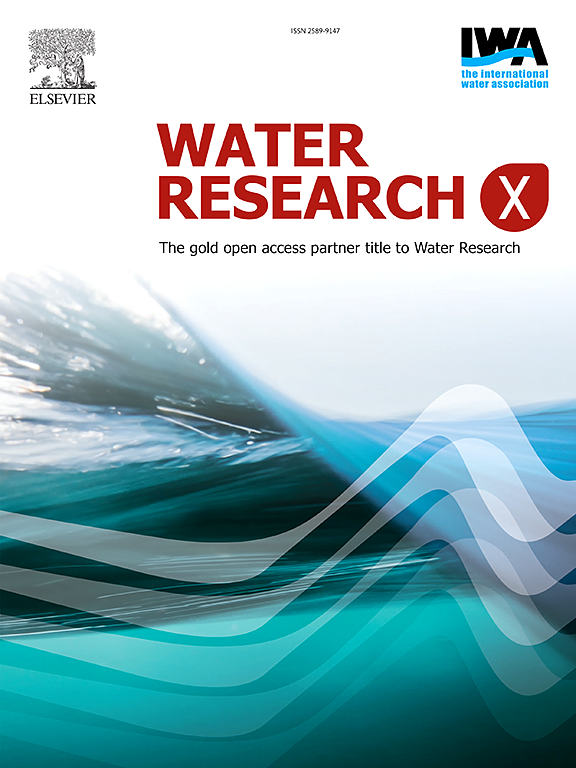Customizing surface grafting and interlayer functionalization for PFOA separation in polyamide membranes
IF 8.2
2区 环境科学与生态学
Q1 ENGINEERING, ENVIRONMENTAL
引用次数: 0
Abstract
Emerging contaminants, such as per- and polyfluoroalkyl substances (PFAS), pose significant challenges to ensuring a clean drinking water supply. This study evaluates various fabrication techniques for incorporating silver-based metal-organic frameworks (Ag-MOFs) into polyamide (PA) nanofiltration (NF) membranes to enhance perfluorooctanoic acid (PFOA) separation and anti-fouling performance. Various characterizations, including scanning and transmission electron microscopy, carboxylic group density, molecular weight cut-off (MWCO) measurements, and zeta potential analyses revealed that each method imparts distinct physicochemical and morphological characteristics to the modified membranes. Among all fabricated membranes, the interlayered Ag-MOFs (UI-MOF) obtained the highest permeance (13.7 Lm−2h−1bar−1) but the lowest PFOA rejection (88.9 %), likely due to its loose PA network with large MWCO (522 Da) and high carboxylic group density (82.0 sites/nm2). In contrast, the dip-coating surface-grafted Ag-MOFs (DS-MOF) achieved the highest PFOA rejection (93.4 %), attributed to its narrow pores (average pore diameter of 10 Å ± 0.06). Additionally, all modified membranes showed superior anti-fouling performance (flux recovery ratio > 94.0 %) compared to the Blank PA membrane, likely due to the improved surface hydrophilicity of the modified membranes.
聚酰胺膜中PFOA分离的表面接枝和层间功能化
新出现的污染物,如全氟烷基和多氟烷基物质,对确保清洁饮用水供应构成重大挑战。本研究评估了将银基金属有机框架(Ag-MOFs)结合到聚酰胺(PA)纳滤(NF)膜中的各种制造技术,以增强全氟辛酸(PFOA)的分离和抗污染性能。各种表征,包括扫描和透射电子显微镜、羧基密度、分子量截止(MWCO)测量和zeta电位分析表明,每种方法赋予改性膜不同的物理化学和形态特征。在所有制备的膜中,层间ag - mof (UI-MOF)的渗透率最高(13.7 Lm−2h−1bar−1),但PFOA截留率最低(88.9%),这可能是由于其松散的PA网络具有较大的MWCO (522 Da)和高羧基密度(82.0个位点/nm2)。相比之下,浸涂表面接枝ag - mof (DS-MOF)获得了最高的PFOA截除率(93.4%),这归功于其狭窄的孔隙(平均孔径为10 ű0.06)。此外,所有改性膜均表现出优异的抗污染性能(通量回收率>;94.0%)与空白PA膜相比,可能是由于改性膜的表面亲水性得到了改善。
本文章由计算机程序翻译,如有差异,请以英文原文为准。
求助全文
约1分钟内获得全文
求助全文
来源期刊

Water Research X
Environmental Science-Water Science and Technology
CiteScore
12.30
自引率
1.30%
发文量
19
期刊介绍:
Water Research X is a sister journal of Water Research, which follows a Gold Open Access model. It focuses on publishing concise, letter-style research papers, visionary perspectives and editorials, as well as mini-reviews on emerging topics. The Journal invites contributions from researchers worldwide on various aspects of the science and technology related to the human impact on the water cycle, water quality, and its global management.
 求助内容:
求助内容: 应助结果提醒方式:
应助结果提醒方式:


